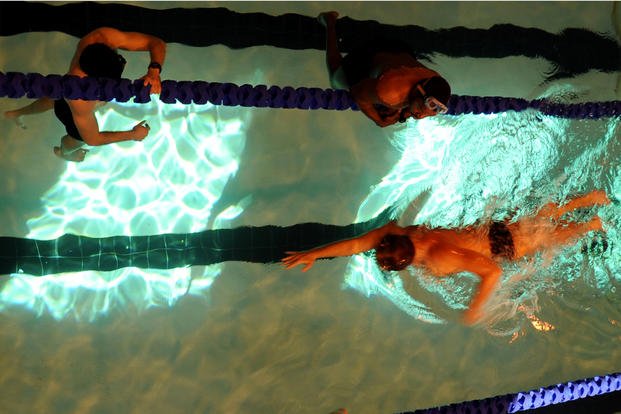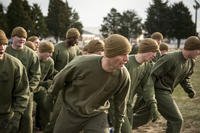For a while, I have been coaching and critiquing young men and women learning proper military swim techniques. They're usually seeking programs in the military that require an underwater recovery stroke for the entrance fitness test and/or require swimming with fins during training. These programs include Navy SEAL, Navy EOD, Navy SWCC, AF PJ/CCT PAST and Navy diver.
The goal of any Spec Ops swimming test is to meet an above-average standard. This doesn't require beating up water for 500 yards or meters, but mastering the right technique so you are more efficient in the water. The best way to learn the combat swimmer stroke (CSS) is to have someone show it to you in person. Video instruction is second-best, and still photos are near useless when trying to learn a very fluid movement, like swimming.
Here are a few areas where people tend to go wrong with this stroke and swimming in general:
Pace
You have to start off with a nice, steady pace. If you start a 500-yard swim at near sprint capacity and you are not a competitive swimmer with super strong conditioning, you will last about 100 yards before the wheels fall off the wagon. Train your goal pace with every swim.
For instance, my training group focuses on a minimum standard of one yard a second for 50 yards, which results in a time of 50 seconds. If you can maintain this pace, you will finish a 500-yard swim in 500 seconds, or an 8:20 in other words. This is an above-average, competitive swim in the Spec Ops swim training world. Sure, there are some who will get below eight minutes or even break seven minutes, so you always can keep improving.
Note: Swimmers and water polo players usually are the ones breaking seven minutes on this test. See two swimmers do entire 500-yard swims and watch their pace maintenance throughout the swim. Both non-swimming athletes are swimming in a seven- to eight-minute time zone.
Body Position
This is the biggest issue people have, and it is usually a problem of popping your head up to breathe instead of turning your head to breathe, as you would with the freestyle stroke.
This stroke is really a mix of freestyle (top arm pull and breathing), breaststroke (bottom arm pull and general timing) and side stroke (body positioned on your side and scissor kick). Although, you can use a breaststroke kick if you prefer. The scissor kick is preferred, as you will have to transition this stroke into the CSS with fins, and that will require scissor and flutter kicks.
See how lifting the head out of the water affects body position. Keep the head down and think like a screwdriver in the water, not a seesaw.
Timing
The first thing a beginner should pick up is the general timing of the stroke. Knowing how to sequence the stroke into the following elements is key: top arm pull, bottom arm pull and breathe, kick and recover the arms back to the streamline position.
The combat swimmer stroke is really just a nickname for a modified side stroke. This stroke utilizes the top arm pull like a freestyle pull, instead of the shorter stroke of the elementary side stroke. The timing is a bit different as well, as you will see in this video of a near perfect timing of the stroke and glide.
Once you get the pace, body position and timing down, you may need a few minor adjustments to fix the kick, arm pull, exhale underwater and glide, but those are easy fixes. The issues I mentioned earlier take time to learn and master in order to reach competitive scoring zones.
See the three-part breakdown of the CSS to understand how the pull, breathe, kick and glide work together to make an efficient stroke that makes no splashes or silhouettes the swimmer. In this world, stealth and efficiency matter.
To get to the training, you need to know how to swim without fins. To get through the training, you will need to add fins. See the video of how to use the CSS with fins to keep your swims efficient so you can go for miles.
Stew Smith is a former Navy SEAL and fitness author certified as a Strength and Conditioning Specialist (CSCS) with the National Strength and Conditioning Association. Visit his Fitness eBook store if you're looking to start a workout program to create a healthy lifestyle. Send your fitness questions to stew@stewsmith.com.
Want to Learn More About Military Life?
Whether you're thinking of joining the military, looking for fitness and basic training tips, or keeping up with military life and benefits, Military.com has you covered. Subscribe to Military.com to have military news, updates and resources delivered directly to your inbox.


















